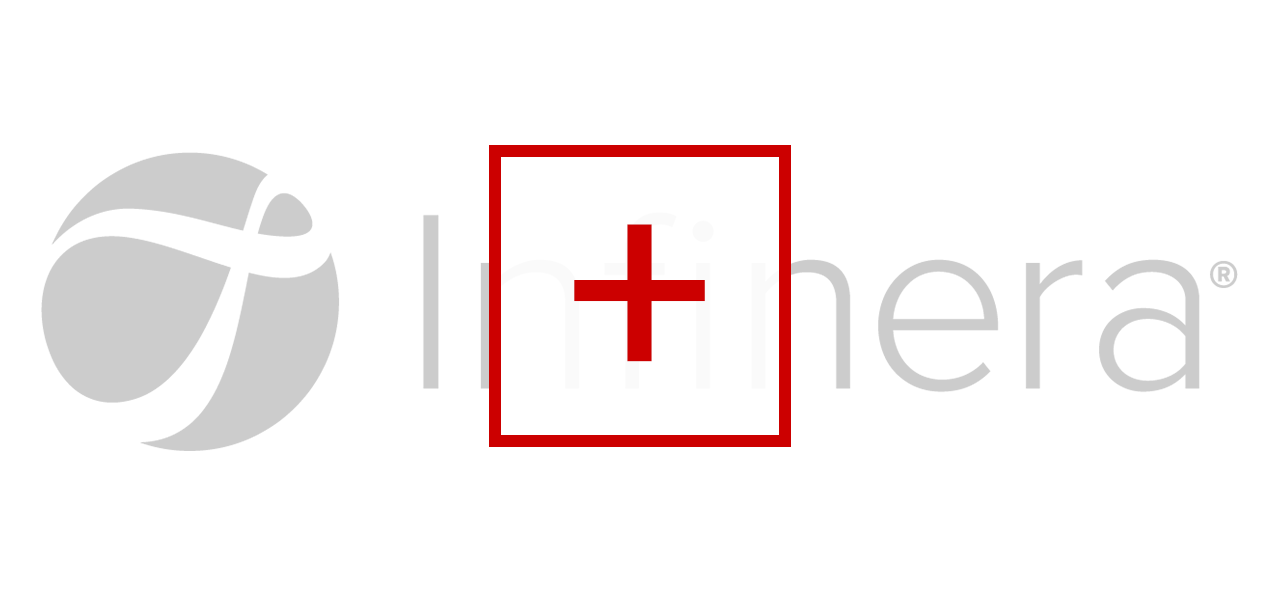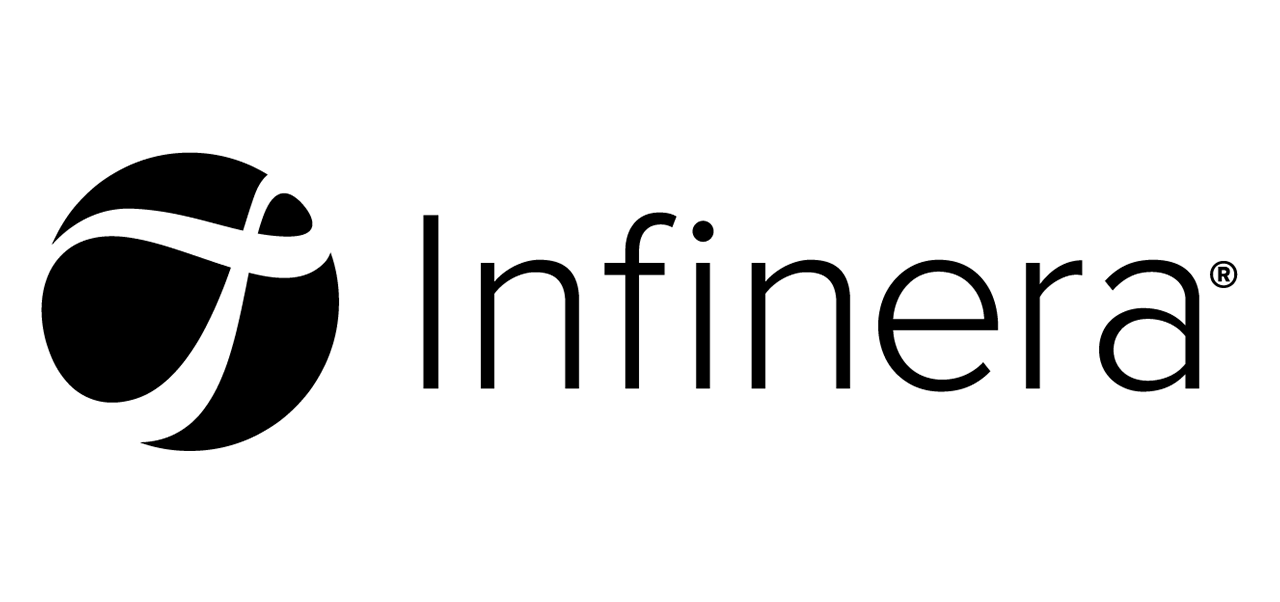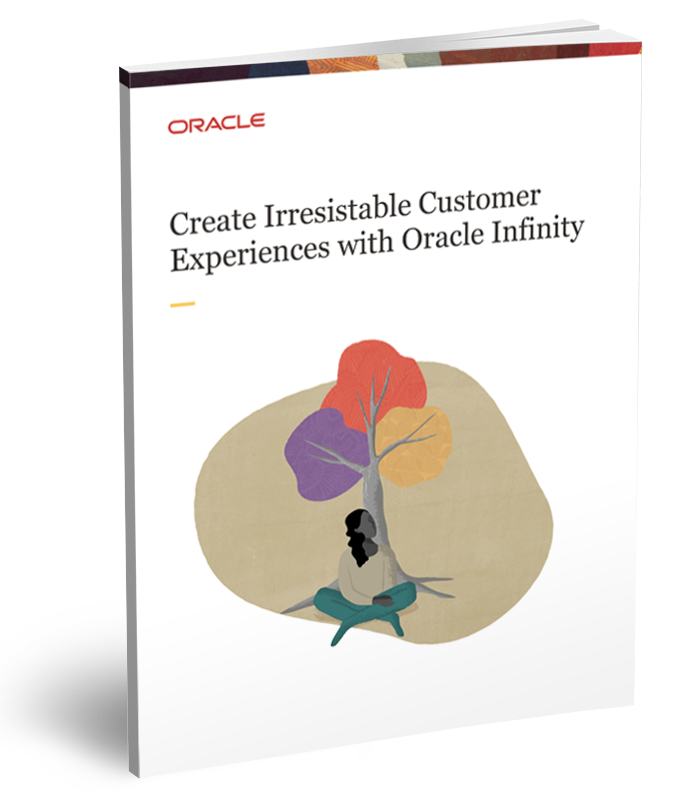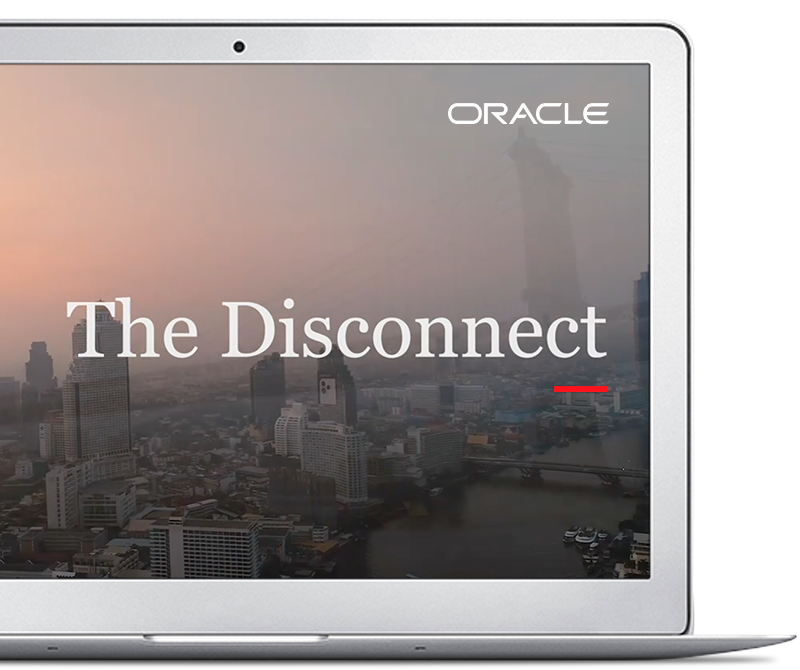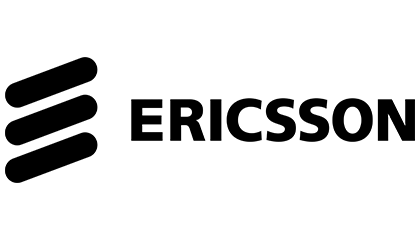5G Transport: A 2021 Heavy Reading Survey
Publish date: February 2022

Sterling Perrin
Sr. Principal Analyst – Heavy Reading
5G commercialization is in full swing in 2022. The Global Mobile Suppliers Association (GSA) counted 487 operators in 145 countries and territories investing in 5G as of year-end 2021, including trials, license acquisitions, planning, network deployments, and commercial launches. Omdia forecasts that by the end of 2022, there will be nearly 1.3 billion 5G mobile subscriptions globally. For some perspective, 5G subscriptions in 2019 totaled under 11 million worldwide.
Although these early statistics are impressive, the 5G industry is still just starting to ramp up. The full possibilities of 5G—in functionality and in revenue-generating potential—lie ahead.
Heavy Reading survey data shows that operator deployment drivers for 5G networks are shifting as the focus moves beyond only faster speeds (primarily for consumer markets) to new markets and new services (heavily targeting enterprises). This is where the advanced 5G functions, defined in ultra-reliable low latency communications (URLLC) and massive machine-type communication (mMTC) use cases, come into play. The coming shift beyond higher data rates to advanced 5G services has big implications for the supporting transport networks, including fronthaul, midhaul, and backhaul—collectively called “xHaul.” While early deployments are about laying fiber and increasing capacity, the next phase is more complex.
In its third year, Heavy Reading’s Operator Strategies for 5G Transport Survey project focuses on the xHaul network considerations and requirements as operators work to meet the new challenges of advanced 5G services delivery. Heavy Reading project partners that aided in survey development are Ericsson, Fujitsu, Infinera, and Nokia.
Completed in November 2021, this year’s survey received 81 qualified network operator responses from around the world, all of which reported involvement in network planning and/or purchasing of network equipment. Geographically, 56% of respondents come from North America. This Heavy Reading white paper is based on the survey results and provides the industry’s most in-depth look at the current state and future trajectory of 5G transport based on operators’ views and plans.

5G Transport Evolution: Making Advanced Services a Reality
In this special webinar, Heavy Reading will be joined by leading experts from Ericsson, Fujitsu, Infinera, and Nokia to unveil key findings from Heavy Reading’s 2021 global 5G Transport operator survey exploring transport network considerations and requirements to meet the challenges of the next phase of 5G services.
5G PRIORITIES
Heavy Reading asked CSPs to assess plans for various initiatives related to 5G, including multi-access-edge compute (MEC), C-RAN, and others. Specifically, the survey asked respondents to identify which of these initiatives they intend to implement by 2025 by selecting all that apply. See Figure 2. Because there can be some confusion, respondents were provided with the following definitions for centralized RAN and cloud RAN:
- Centralized RAN (C-RAN): A RAN where radio units/remote radio heads are located at the cell site and layer 2 and higher baseband functionality is geographically separated at a centralized location for resource pooling. May be physical or virtual.
- Cloud RAN: A centralized RAN that employs hardware and software disaggregation with RAN virtualization, using COTS servers.
Originally conceived as a qualifier question to steer respondents away from sections that are not relevant to their plans, the aggregate data also reveals CSP prioritization across these initiatives. At the top of the priority list is edge/MEC, which 64% of CSPs surveyed expect to implement by 2025. Following closely behind at 62% is centralized RAN, with deployment expected by 62% of respondents over the time period. Cloud RAN trails a bit behind (at 57%), followed lastly by network slicing, with deployment expected by just under half of respondents (at 49%).
The prioritization synchs up well with past survey data as well as anecdotal data from one-on-one discussions that indicate that edge strategy is top of mind for service providers right now. Network slicing, though still important, has slipped a bit down the priority list over the past two years as the complexities of end-to-end slicing have become apparent.
Figure 2: Which of the following is your organization currently implementing or plan to implement by 2025? (Global)
n=81
Source: Heavy Reading, 2021
Breaking out initiative timelines to compare North American respondents with their Rest of World counterparts yields some differences. In particular, North American CSP expectations over the next five years for both centralized RAN and cloud RAN are far more aggressive than Rest of World CSPs. While 71% of North American CSPs expect to rollout C-RAN by 2025, just 50% of RoW CSPs expect to do so. Similarly, 64% of North American CSPs expect to deploy cloud RAN while just 47% of RoW CSPs expect to do so. See Figure 3.
The survey findings track well with what Heavy Reading is seeing currently – with CRAN plans and deployment expectations in North America far more aggressive than expectations in EMEA. Still the survey data indicates that, by 2025, C-RAN architectures will make further headway outside of North America (e.g., 50% of RoW respondents expect at least some deployments). For network slicing, expectations are far greater for Rest of World respondents compared to their North America counterparts.
Centralized Rans
RAN functional decomposition creates distinct segments in the RAN to be addressed by transport networks in cases where those functions are physically separated in the access network. In decentralized RAN architectures dominant through most of 4G, the backhaul segment connects BBU processing with the mobile core. This is served by Ethernet.
Centralized RAN and partially centralized RAN (also called split RAN) architectures maintain the backhaul segment but add two new segments:
- Midhaul, connecting DU processing with a physically separated and centralized CU and
- Fronthaul, connecting the cell site-located RU to physically separated DU processing.
The fronthaul segment has been the area of greatest challenges and industry attention to date due to the high bandwidth requirements combined with extreme latency restrictions relative to both backhaul and midhaul.
This section addresses centralized RAN architectures and fronthaul connectivity.
Increasing network resiliency is the top motivation to move to a centralized RAN architecture, selected by 68% of CSP respondents. Second tier motivations cited by CSPs are improving RAN performance, migration to virtualized RANs, and simplifying cell sites. (See Figure 4.)
Centralization contributes to greater RAN resiliency by pooling BBU resources across multiple cell sites – thus delivering BBU resource redundancy. As a motivation to centralize resources, the top ranking of network resiliency in this survey is a bit of a surprise. RAN performance and RAN virtualization have typically been the top factors in past Heavy Reading surveys. Still, it is clear that network resiliency is crucial to differentiation in 5G, and CSP awareness of the role that centralization can play here may be increasing. Not only does centralization improve resiliency for the baseband elements, but CSPs also see resiliency benefits in centralizing the timing source and distributing the grand master location instead of relying on satellite at the cell sites.
Improving RAN performance and cell site simplification benefits are straight forward motivations. Processing traffic from multiple antenna sites within the same data center or central office aids inter-site coordination functions such as carrier aggregation and coordinated multi-point (CoMP). These functions are important for increasing both coverage and capacity in 5G – particularly when using mid-band and low-band spectrum.
The importance of C-RAN in virtualization is not a surprise, as centralization has been promoted as a requirement for virtualization from the very beginning. Over the past few years, a decoupling has occurred in which benefits of centralization are increasingly recognized beyond virtualization. The survey results reflect this ongoing trend: virtualization remains an important driver, but C-RAN architectures are driven by more than virtualization alone.
Figure 4: What are the top motivations to move to centralized RAN (Global)?
n=50
Source: Heavy Reading, 2021
Motivations vary by geographic region, with North America respondents citing increased network resiliency as a motivation for centralization (at 75%) far greater than their Rest of World counterparts (at 56%). Rest of World respondents, in contrast, selected cell site simplification as their top choice (at 67%), far ahead of North American respondents (Figure 5).
Figure 5: What are the top motivations to move to centralized RAN (NA Vs. RoW)?
n=32 North America; n=18 Rest of World
Source: Heavy Reading, 2021
Delving into C-RANs a bit further, the survey asked about timelines for deploying C-RANs for those operators interested in C-RAN (the 62% of respondents identified in Figure 2.
In 2022, 60% of CSPs expect less than 20% of 5G RAN sites will have centralized RAN, but this drops to just 22% in 2025 as CRAN penetration in 5G RAN architectures increases. While early 5G deployments rely on existing facilities that are predominantly distributed, by 2025, operators will have acquired more fiber and implemented more virtualization. In 2025 a small minority of 12% expect greater than 40% of 5G sites will have centralization, but by 2025, this increases to more than one third of the group (at 34%). See Figure 6.
Figure 6: What percentage of your organization’s 5G RAN sites will implement a centralized RAN (C-RAN) by year-end 2022? By 2025?
While 5G transport efficiency improves significantly through the CPRI Consortium’s eCPRI specification, CSPs will continue to have massive amounts of legacy CPRI streams as 5G and previous mobile generations (particularly 4G) will co-exist in networks for many years. Handling legacy CPRI traffic as 5G emerges is a crucial issue for nearly every CSP globally.
To better understand CPRI plans, Heavy Reading asked CSPs to identify which technologies they plan to use to transport legacy CPRI moving forward. (Respondents were asked to select all that apply. Figure 7 shows the results.
Service providers have multiple means at their disposal to handle legacy CPRI, and the data shows that they intend to make use of all of them. Selected by 64% of the survey group, legacy overlay using dark fiber or WDM is the top choice for legacy CPRI transport, followed by transport via eCPRI via CPRI to eCPRI conversion (selected by 52%). Trailing individually are structure agnostic RoE (selected by 43%) and structure aware RoE (selected by 29%). Combined, however, RoE comes out as the top option, selected by 72% of CSPs surveyed.
Fiber rich networks will make use of dedicated direct fiber transport, while networks with fiber scarcity will use technologies and techniques to boost transport efficiency, including WDM and/or packetized transport with Time Sensitive Networking. Smart self-tuning optics are also important for many CSPs.
Figure 7: Which technologies will your organization use to transport legacy CPRI radio traffic?
n=69
Source: Heavy Reading, 2021
Figure 8: What are the biggest advantages of RoE compared to CPRI to eCPRI conversion?
n=69
Source: Heavy Reading, 2021
On the other hand, CSPs report that higher bandwidth savings, longer distances in the fronthaul network, and traffic differentiation and redirection are the biggest advantages of CPRI to eCPRI conversion, chosen by 55%, 49%, and 48% of respondents, respectively. See Figure 9.
Figure 9: What are the biggest advantages of CPRI to eCPRI conversion compared to RoE?
n=69
Source: Heavy Reading, 2021
One of the bigger surprises to come from the survey is the high interest in single fiber working in CSPs’ fiber-to-the-tower strategies. Bi-directional optics include transmit and receive wavelengths within the same fiber, allowing single fiber connectivity to cell sites (versus historical dual fiber connectivity). Fifty-two percent of CSPs surveyed see single fiber working as “important,” which Heavy Reading defined as up to 50% of towers connected with SFW, and 20% of the survey group believes the technology is “critical,” meaning greater than 50% of towers will be connected with single fibers. The important and critical responses combine for 72% of the survey group. On the other hand, just 1% view SFW as “not important.” See Figure 10.
The result points to the overwhelming need to conserve fiber capacity, even in access networks that may be considered “fiber rich.” The reality is that C-band and mid-band 5G traffic will consume large amounts of bandwidth, which, when combined with legacy 5G traffic, can add up to 200-300 Gbps of fronthaul capacity.
Figure 10: How important is Single Fiber Working (SFW) with bi-directional optics to your organization’s fiber-to-the-tower strategies?
n=81
Source: Heavy Reading, 2021
The final question in this section looks at deployment plans for small cells. Specifically, the question asked respondents to identify the portion of small/pico cells expected to be deployed with mmWave and/or C-band spectrum in 2022 and in 2025 (Figure 11).
As expected, near-term small cell expectations are modest. In 2022, 58% of CSPs expect less than 20% of small cells to be deployed with these spectrum bands, and 23% expect less than 10%. Just 10% expect greater than 40%. In 2025, however, 37% predict that more than 40% of their small cells will use mmWave or C-band spectrum, and 15% anticipate that share of small cells to be more than 60%. Just 5% expect less than 10% of small cells will use mmWave or C-band by 2025.
n=81
Source: Heavy Reading, 2021
CLOUD RAN
As noted earlier, cloud RAN and centralized RAN can be related, but they are not the same and can also be implemented independently of one another (e.g., a C-RAN with no virtualization or virtualization over a distributed RAN architecture). This section explores CSPs view and plans specifically for cloud RAN.
Globally, there has been minimal adoption of cloud RAN to date but CSPs have ambitious growth plans over the next five year, based on survey results. Just over two-thirds of respondents (67%) expect less than 20% of 5G RAN sites to have virtualization by year-end 2022. However, more than three quarters of those surveyed (78%), expect greater than 20% of 5G RAN sites will have virtualization by the end of 2025. At 43%, a plurality anticipate cloud RAN adoption will range from 21-40% of 5G RAN cell sites. Figure 12 shows the results.
The expectations are ambitious, but readers should keep in mind that Heavy Reading surveyed only the portion of respondents that have cloud RAN plans (57% of the total survey group). Thus, 43% of CSPs surveyed expect no cloud RAN deployments through 2025.
Figure 12: What percentage of your organization’s 5G RAN sites will implement a Cloud RAN (i.e., with virtualization) by year-end 2022? By 2025?
N=46
Source: Heavy Reading, 2021
Even for those with plans for RAN virtualization, transport challenges remain. According to the survey, capacity requirements is, by far, the biggest transport network challenge to cloud RAN (selected by 72%). Ranking second at 54% is latency, followed by synchronization in a distant 3rd at 35%. See Figure 13.
Figure 13: What are the biggest transport challenges in adopting a Cloud RAN architecture?
n=46
Source: Heavy Reading, 2021
Timing and Synchronization
Synchronization in mobile networks is not a new topic as timing and synchronization have always been required in cellular communications. The move from 4G radio technologies to 5G introduces new challenges and requirements in delivering timing and synch, however, including the migration from FDD spectrum to TDD spectrum, cell site densification, and others. This section explores timing and synchronization issues related to 5G.
Heavy Reading asked CSPs to identify network features requiring high phase/time synch accuracy that they intend to use in their network (Figure 14). Topping the list are performance-boosting coordinated RAN features (selected by 59%), followed by fronthaul with ring or mesh protection (selected by 52%). Following in 3rd, but still significant, is fronthaul with RoE (at 43%). It’s worth noting that CSPs may use all three of these features together as radio coordination requirements are a driver for fronthaul architectures.
Figure 14: Which of the following network features, requiring highly accurate phase/time synchronization accuracy, does your organization plan to use in your network?
N=81
Source: Heavy Reading, 2021
Next, Heavy Reading asked respondents to identify the top challenges they foresee when deploying terrestrial (i.e., non-satellite) timing and synchronization. Topping the list of challenges by a large amount is strict synch requirements for 5G applications, including packet fronthaul. Ranking second, but still significant to a majority of respondents, is simultaneous support for different synchronization profiles (selected by 59% of the group). See Figure 15.
Figure 15: What challenges do you foresee when deploying terrestrial network-based timing and sync functionality?
n=81
Source: Heavy Reading, 2021
Edge
Developing an edge strategy is a crucial topic for CSPs today, as evidenced by the highest priority placed on edge/multi-access edge compute (MEC) earlier in Figure 2. In the survey, Heavy Reading sought to better understand the most significant application (or use case) that is driving edge deployments in 5G. Interestingly, supporting low latency services and virtualization of 5G RAN scored equally important as the primary driver (each selected by 35% of the survey group). Figure 16 shows the results.
The two drivers are very different: Low latency services is aimed at enterprise customers and revenue generation, but virtualization of functions is a network-centric internal use case. For 27% of CSP respondents, both virtualization and low latency services are being eyed at the same time.
Figure 16: What is the most significant initial application that is driving (or will drive) the deployment of multi-access edge compute (MEC) into your 5G x-haul network?
N=52
Source: Heavy Reading, 2021
The industry defines “edge” as a location – not a thing – but where the edge resides in a CSP network continues to be a matter of great discussion and debate. While Heavy Reading had hoped to pin down the location of the service provider edge, the survey results point to multiple important locations, including the cell site (selected by 56%), the CU site (54%), the DU site (50%), and the core node (50%). And while alternative locations individually registered lower than these top four choices, the alternative locations were selected by 50% of respondents in combination (Figure 17).
The high figure for RU is a bit of a surprise. It could be driven by respondents selecting this for some very specific RU locations such as sports stadiums, rather than a general widescale rollout to RU sites across the network.
Thus, all service provider locations are currently in play for the edge at this very early stage of rollout. What can’t be known at this time is whether one (or more) of these promising locations might fall out of favor over time as CSP edge strategies become more clear.
Figure 17: Where do you plan to deploy MEC hardware in your 5G x-haul network to support initial MEC/vRAN capabilities?
N=52
Source: Heavy Reading, 2021
Figure 18 and Figure 19 track the migration of DWDM access rates used in 5G xhaul between 2022 and 2025, respectively, with the goal of gaining insights into how those 5G xhaul data rates rise and fall over that timeframe.
Looking at the near term of 2022 (Figure 18) shares of any given data rate are relatively small, as reflected in the single-digit responses for high penetration rates – such as the 41-60% range and the more than 60% range. This is not surprising as commercial 5G is recent and the majority of the data rates have been used in other applications (broadband, enterprise, or even 4G backhaul) for many years.
The one exception here is 25G, which is relatively new and which has a strong early foothold particularly in 5G fronthaul. Two-thirds (66%) CSPS report that xhaul accounts for 11-40% of 25G DWDM interfaces currently.
Figure 18: Approximately, what percent of each of the following DWDM access rates do you anticipate deploying to support 5G x-haul by year-end 2022?
- 25G: >41% xhaul share increases from 2% in 2022 to 27% in 2025
- 100G: >41% xhaul share increases from 6% in 2022 to 22% in 2025
- >100G: >41% xhaul share increases from 8% in 2022 to 21% in 2025
Figure 19: Approximately, what percent of each of the following DWDM access rates do you anticipate deploying to support 5G x-haul by 2025?
N=52
Source: Heavy Reading, 2021
NETWORK SLICING AND SEGMENT ROUTING
The final section of this survey report examines network slicing and the related topic of segment routing, which is an important routing technology for slicing in transport networks. Different requirements of different 5G use cases drives the need for network slicing (including transport slicing). Thus, understanding CSP plans for 5G use cases helps shed light on when they will need to adopt slicing.
In the near-term eMBB use cases will continue to drive CSP deployments. Nearly one third of respondents (30%) expect to deploy eMBB at scale by the end of 2022, followed by vehicle to everything (V2x) at 23%. Both URLLC and mTC use cases are expected to trail in adoption, with just 15% of respondents expecting widescale adoption of either use case by the end of 2022. See Figure 20.
Looking out over the medium term (2023-2024), eMBB is expected to continue to dominate, with 78% of respondents expecting to have reached widescale deployments by the end of the timeframe. But CSPs also expect URLLC will experience a significant adoption surge. By the end of 2024, 73% of CSPs surveyed expect significant deployments of URLLC.
Interestingly, after a relatively strong initial push, V2x adoption is expected to slow relative to other major use cases, according to the survey. It appears that while some CSPs hope to move quickly into V2x, the use case is not a key target for all service providers.
Figure 20: Within your organization, when will each of the following major 5G use cases be deployed at scale?
N=40
Source: Heavy Reading, 2021
Not surprisingly, network slicing is of interest across all major use cases, as slicing will be required to create the partitioned logical networks that meet the performance and SLA needs of each use case. A majority of respondents expect to use network slicing in any given 5G use case. However, mMTC stands out as a particularly important one for network slicing, as mMTC was selected by 80% of respondents.
Shedding a bit of light on the low timeline priority of slicing initiatives (relative to other 5G initiatives listed in Figure 2), mMTC correlates most strongly with slicing but is also expected to reach scale later than other use cases (Figure 21).
Figure 21: For which use cases do you expect to use network slicing?
N=40
Source: Heavy Reading, 2021
There is significant industry discussion and debate on the benefits of software slicing techniques versus hard slicing techniques for 5G. Figure 22 provides a high-level overview of the characteristics of each.
Figure 22: Hard Slicing Versus Soft Slicing Characteristics
Hard Isolation | Soft Isolation | |||
|---|---|---|---|---|
Connection Oriented | ||||
Wavelength | ODUk/ODUflex (OTN) | FLexE (MTN) | MPLS, Segment routing | |
Path | Hard wired | Virtual path pre-negotiated | Virtual path pre-negotiated | Virtual path pre-negotiated (label switched path) |
Traffic isolation | Circuit isolation (on L1) (L2 VPN within containers) | Circuit isolation (on L1) (L2 VPN within timeslots) | Packet level isolation (L2/L3 VPN) | |
Exclusivity / Traffic isolation | No impact of other streams | No impact of other streams. Transparent mapping of client signals | No impact of other streams. Traffic limited to Ethernet clients | Potential impact of other streams. Mitigated vis QoS constructs |
Bandwidth efficiency / granularity | Less efficient for sub-lambda rates | Good. Ability to resize ODU links (1.5G-100G) | Good. Time slot resizing (5G increments) | Very good. Stat muxing |
Source: Nokia, 2021
Survey data shows that both hard and soft transport slicing techniques will be used by a majority of CSPs – with the combination of hard and soft slicing selected by 55% of respondents. However, anecdotal evidence shows that that soft slicing will be used predominantly to meet most slicing requirements, with hard slicing expected to be used in special cases. See Figure 23.
The survey data also supports this strengthening assessment. While 35% of respondents expect to implement soft slicing alone, just 5% of those surveyed expect to rely solely on hard slicing – a significant 7x difference in appeal.
Figure 23: What will your organization use for transport network slicing?
N=40
Source: Heavy Reading, 2021
Lastly, the Heavy Reading survey looks at segment routing, an emerging routing technology that is closely associated with soft slicing. Heavy Reading asked the full survey group (i.e., all 81 qualified respondents) to identify expected timelines for segment routing in several applications, specifically, transport slicing, traffic engineering, and protocol simplification. See Figure 24.
Of the three, protocol simplification is the most advanced, with 25% of CSPs already implementing segment routing and an additional 38% expecting to use segment routing by the end of 2022 – totaling 63% of the survey group by the end of this year. Traffic engineering follows with 19% having implemented segment routing by the end of 2021 and an additional 41% expecting to use segment routing by end of 2022 – totaling 60% of CSP respondents by the end of this year.
Compared to these two applications, segment routing for transport slicing lags. Just 12% of respondents reported segment routing use by the end of 2021, though 32% expect to implement segment routing for slicing in 2022 – totaling 44% of CSP respondents by the end of this year.
Given the other finding regarding network slicing, Heavy Reading suspects that the modest near-term expectations are not a knock on the merits of segment routing itself but rather a reflection of the scaled back expectations of networking slicing in general for the near term. Clearly, segment routing is already showing live-network promise in applications outside of 5G, and these trends will continue even as slicing emerges as an additional application for the technology.
Figure 24: When does your organization plan to introduce segment routing to support the following applications/functions?
N=81
Source: Heavy Reading, 2021

5G Transport Evolution: Making Advanced Services a Reality
In this special webinar, Heavy Reading will be joined by leading experts from Ericsson, Fujitsu, Infinera, and Nokia to unveil key findings from Heavy Reading’s 2021 global 5G Transport operator survey exploring transport network considerations and requirements to meet the challenges of the next phase of 5G services.

Sterling Perrin
Sr. Principal Analyst – Optical Networking & Transport

Hector Menendez
Senior Product Marketing Manager, Nokia

Jon Baldry
Director Metro Marketing, Infinera

Joe Mocerino
Principal Solutions Architect, Packet Optical Networking, Fujitsu
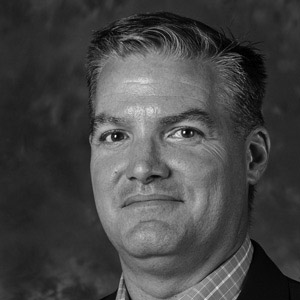
Andre Devillier
Business Development Director, 5G Transport Solutions, Ericsso





